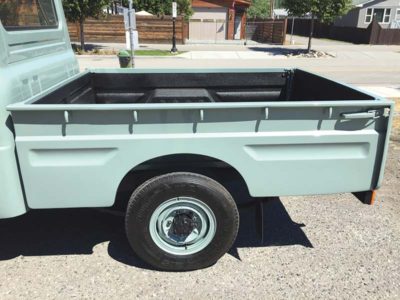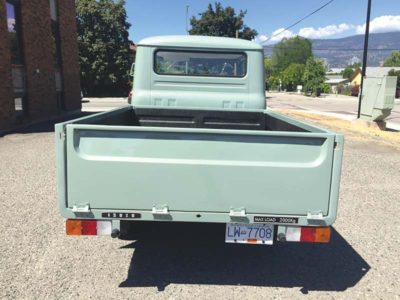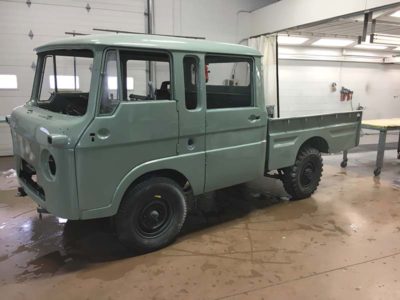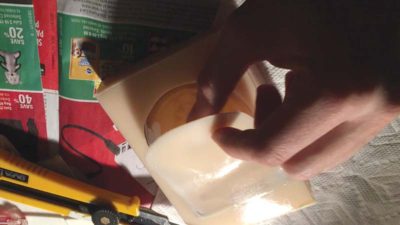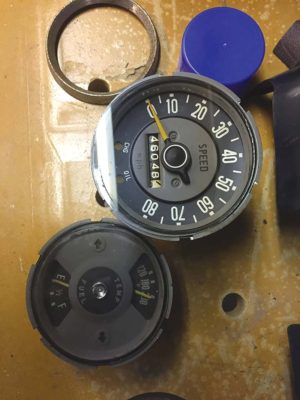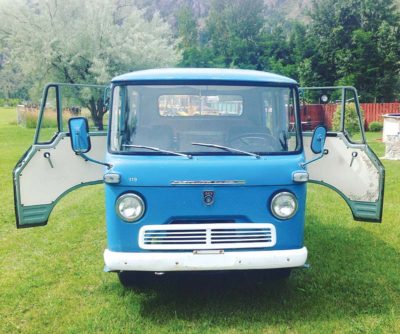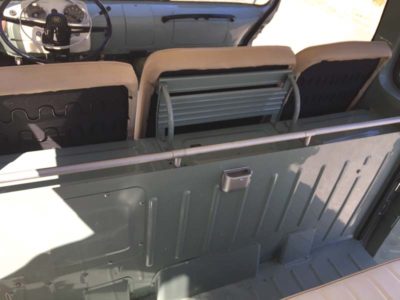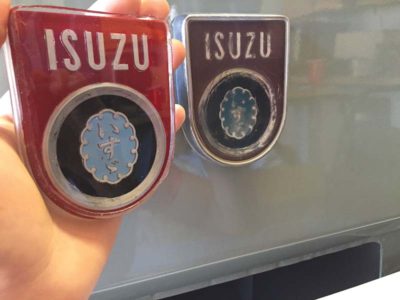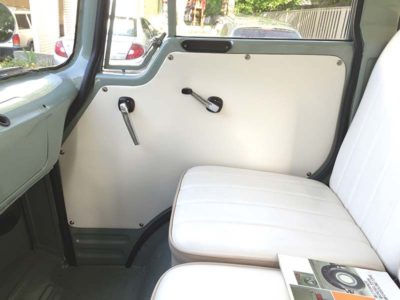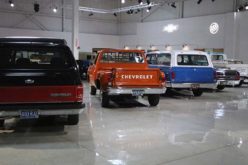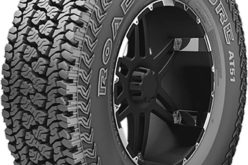Feature: 3 Friends & A 1966 Isuzu Elf

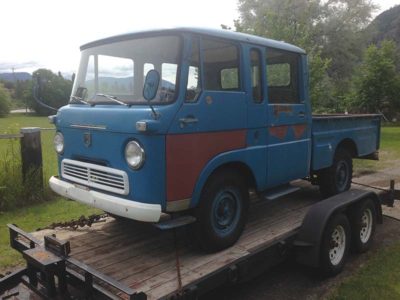
Three friends and a 1966 Isuzu Elf quad-cab – an unlikely combination, and one that came about unexpectedly. While they are known today mostly for commercial vehicles and diesel engines, Isuzu once sold passenger cars all over North America – and even small trucks in Canada. A handful of original generation Elf models were sold in Canada from 1959 to 1966. It’s not clear how many were actually imported, but only five are known to survive today.
In 2016, Dustin Herbison heard through a family friend that there was an interesting farm-find not too far from his Kelowna home that he might want to see. Indeed it was interesting – this four-door version (of what North America might call a sub-compact pickup truck) is an oddball, and possibly the only one left in the world. Dustin quickly recruited two friends as co-owners of this unusual project: Jeff TeBrinke, a Red Seal welder, and Alex Lopes, Red Seal mechanic. Dustin himself is a shop teacher.
As far as commercial trucks go, the first-generation Elf is a fairly standard configuration. A 2.2L four-cylinder diesel engine mates to a four-speed column shift transmission. Power on this particular model is sent just to the rear wheels. In addition to the pickup, Isuzu also offered delivery vans, flatbeds, tankers, and even a passenger van version with windows. One of these vans was discovered in another field in B.C. (possibly even waiting its own turn to be restored by other intrepid enthusiasts!)
We interviewed Dustin about the project and found out that restoring a mid-’60s Japanese truck is quite a challenge. Despite a few setbacks and total lack of restoration parts, this dream-team of auto enthusiasts had the skills and know-how to turn an almost-abandoned oddity into a showroom-perfect collectors’ item.

Dustin Herbison: I came across the Elf on a farm in Okanagan Falls. My Dad knew the owner of the farm and said I should take a look at this weird vehicle that was parked in their field. Once I saw it, I sent pictures to my two good friends who I grew up with. All three of us have always loved Japanese vehicles and when we found the Elf, we knew it deserved to be restored. We weren’t looking for anything at the time. It all just kind of happened.
TP: We’re told it’s likely the only quad-cab first-gen Elf in existence – and that you’ve got a $1,000 reward if someone can find even a photograph of another one!
Dustin Herbison: Once we purchased Elf, we began researching as extensively as possible. There were hours and hours spent online, including many hours searching Japanese websites as well. We realized that we could not find a photo of a four-door whatsoever. All we had was an illustration from one of the original Isuzu brochures showing that the four-door was indeed an option. We managed to contact the White Lake Observatory in Penticton, where it spent most of its life. They found in their archives an original photo of the Elf being used as a work vehicle in the late ’60s. This is the only other photo we’ve come across and it is a picture of our own vehicle. So, we decided to advertise on social media and to anyone who sees our truck that we will give them $1,000 cash for a picture of another four-door first generation Elf. Even if it is right-hand drive and from anywhere in the world, our reward is valid.

Dustin Herbison: Absolutely. We all grew up racing imports and building turbo cars and always had a soft spot for anything Japanese. One of the cars we built was a turbo 1988 Acura Integra sleeper – DOHC 1.8L engine swap, twin-intercooled, hidden 3-in. turbo-back exhaust. Nicknamed “The Bag.”
How long did it take; how much do you think you’ve spent?
Dustin Herbison: We didn’t spend as much as many people think, simply because we had the know-how to do the majority of the work. We found three original brochures for sale on a Japanese auction site and used those to guide our restoration as we wanted it to be as original as possible – which it is, right down to the colour. We estimate there are at least 1,500 hours invested over a two-year period. We went really hard on it for two years. Money wise, we’d rather not say.
TP: What were the most challenging parts of the restoration?
Dustin Herbison: Where do I start? Firstly, there is NOTHING aftermarket available for the body, suspension, interior, instrument cluster, windows, trim, bumpers, marker lights, etc.
The front Isuzu crest had to be completely made as the old one was cracked and busted. We had to create a mold of the old one out of polyurethane and then pour a clear plastic resin into the mold and delicately paint it from the back side before inserting it back into its chrome housing. There were multiple attempts made and 40 hours spent before we were happy with the result.
The steering wheel and dashboard grab handle were completely shrunken, deformed and cracked. Twenty-five hours were spent restoring these items, as there were no available replacements anywhere.

The hardest and most frustrating part of the entire restoration was the fact that from the factory, they used an unheard-of fastener/thread pitch combination. The vehicle used hundreds of 5×1.0mm fasteners (many were brass) and we had to re-use all of them as we were dedicated to maintaining its originality. All of the female threads and body parts used this thread pitch. Normally all 5mm fasteners have a 0.8mm thread pitch. We tried hard but couldn’t buy any screw, nuts, or bolts, or buy a tap & die for this. This made the removal of fasteners extraordinarily difficult and important that nothing broke.
TP: Were there any particular shops, brands, or people who helped you significantly with the restoration?
Dustin Herbison: Mike at AA-1 Windshield and Glass was a major help. Dave at Outlaw Graphics in Keremeos, Brian Cullen from Kelowna Performance Collision and Gordon’s Upholstery were integral to the restoration.
TP: What are your plans now that it’s completed? We saw on Instagram that you found another (two-door) Elf in the Kootenays. Will you be restoring that one too?
Dustin Herbison: No, the other truck is beyond repair in our opinions. We have been thoroughly enjoying our shared ownership in the vehicle. We recently got our collector plates. We just enjoy cruising it around and attending the odd car show. It is ALWAYS a hot topic of conversation anywhere it goes. We did the restoration entirely for ourselves, but it has been really cool that everyone who sees it absolutely loves it.
Where many others would see impossibility, Dustin, Alex and Jeff saw potential. Restoring any vehicle in two years is no easy task – and it’s especially difficult if that vehicle is a truck that has no replacement parts and no aftermarket support. But with the skills they all use on a daily basis in their professional lives, these three friends were able to achieve the impossible and bring new life to a forgotten vehicle – possibly the last one in existence anywhere.




